One Big Beautiful Bill Act: Economic Impacts and U.S. Stock Market Strategies
Executive Summary
TradingKey - On 3 July 2025, the U.S. House of Representatives passed the One Big Beautiful Bill Act, which was signed into law by President Trump the following day. In the short term, the Act—particularly its tax reduction provisions—is expected to provide a boost to the U.S. economy. However, in the long term, the Act is likely to exacerbate the U.S. debt burden, leaving structural economic challenges unresolved. Thus, the economic impact of the Act can be summarised as beneficial in the short term but detrimental in the long term. Regarding asset allocation strategies, the short-term economic growth spurred by the Act is expected to drive continued rebounds in U.S. stock market performance, making equities an attractive investment. Conversely, the rising debt levels are likely to push bond yields higher, creating headwinds for U.S. Treasuries. Therefore, we are bullish on U.S. equities and bearish on U.S. bonds in the short term. In terms of sector-specific strategies, we maintain a bullish outlook on the technology and traditional energy sectors, while adopting a bearish stance on the healthcare and renewable energy sectors. The Act’s extension of tax cuts, repeal of Section 899, and enhanced deductions are all positive for the technology sector. The Act also supports the traditional energy sector through measures such as resuming lease sales for oil and gas, streamlining approvals, and reducing royalty rates. However, reductions in funding for Medicaid and the Children’s Health Insurance Program (CHIP), along with the elimination of electric vehicle (EV) subsidies, are negative for the healthcare and renewable energy sectors. In conclusion, with the passage of the One Big Beautiful Bill Act, investors should adopt prudent asset allocation and sector-specific strategies to capitalise on market opportunities.
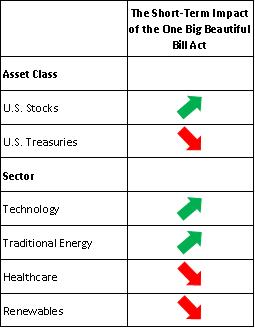
Source: TradingKey
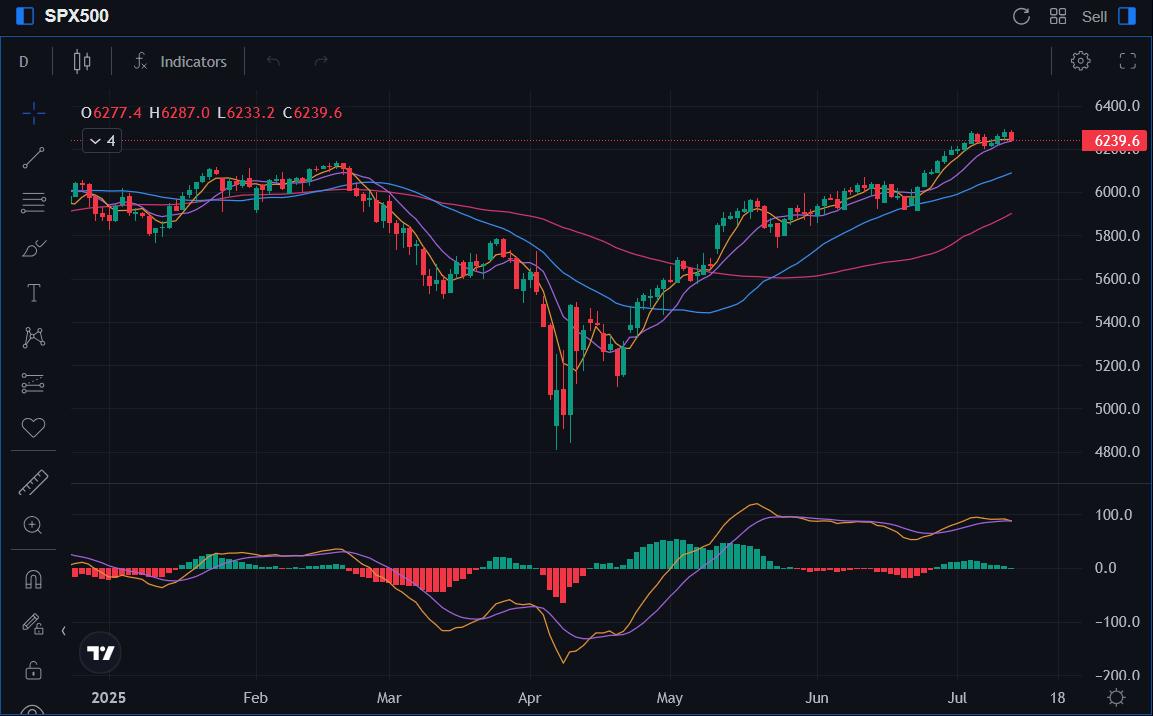
Source: Mitrade
* Investors can directly or indirectly invest in the stock market through passive funds (such as ETFs), active funds, financial derivatives (like futures, options and swaps), CFDs and spread betting.
1. Introduction
On 3 July 2025, the U.S. House of Representatives passed the One Big Beautiful Bill Act with a narrow vote of 218-214. The following day, President Trump signed it into law, officially enacting it. The "big" aspect of the Act is reflected in its extensive scope, with the final version spanning 869 pages. Its "beautiful" impact, however, is likely limited to the short term, as tax cuts are expected to increase disposable income, thereby boosting economic growth in the near term. Over the long term, however, these tax reductions may reduce federal revenue, exacerbating fiscal challenges.
More specifically, the Act consolidates three core Republican policy priorities: (1) significant tax relief, (2) strengthened national security measures, and (3) enhanced legislative efficiency. The Act not only underscores the policy priorities of the current administration but also continues to shape expectations among households, businesses, and markets. However, it carries notable risks that warrant caution, including the potential for a widening fiscal deficit, reduced support for social welfare programs, and delays in achieving climate goals (Figure 1).
Figure 1: Key Points of the One Big Beautiful Bill Act
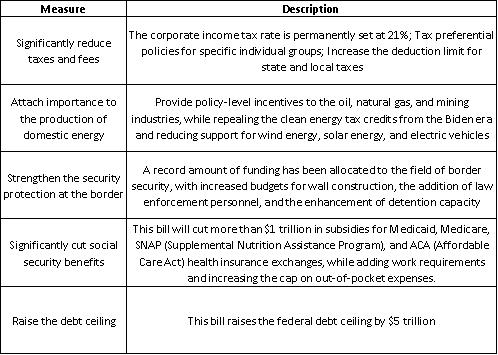
Source: TradingKey
* For related information, refer to the article published on 7 July 2025, titled “BofA Chief Warns: "Big and Beautiful" Bill Could Trigger $50 Trillion Debt Bubble!”
2. Economic Impacts of the Act
In the short term, the One Big Beautiful Bill Act—particularly its tax reduction provisions—is expected to provide a boost to the U.S. economy, partially offsetting the negative effects of tariffs. Recent U.S. economic data continues to show resilience. For instance, June’s non-farm payrolls and unemployment rate significantly outperformed expectations (Figures 2.1 and 2.2), while the U.S. ISM manufacturing and services PMI figures also slightly exceeded forecasts. Under the short-term effects of the Act, the U.S. economy is projected to maintain its upward momentum. However, as the core of the Act focuses on extending existing tax cuts, its stimulative impact on economic growth for 2025-26 is likely to be less pronounced than the 2017 tax cut legislation.
However, the Act does not fundamentally address the structural challenges facing the U.S. economy; it merely sacrifices long-term stability for short-term gains. In the long term, the Act is likely to hinder efforts to reduce the U.S. government's debt, with projections estimating the national debt will reach $47 trillion by 2030 (Figure 2.3). Furthermore, the Act is expected to exacerbate income and welfare disparities, intensifying political polarisation in the U.S. High-income individuals and corporations will benefit significantly from the tax cuts, while reductions in subsidies, Medicaid, and food stamp programs will disproportionately impact low-income households. In summary, the economic impact of the Act is beneficial in the short term but detrimental in the long term.
Figure 2.1: U.S. Nonfarm Payrolls (000)
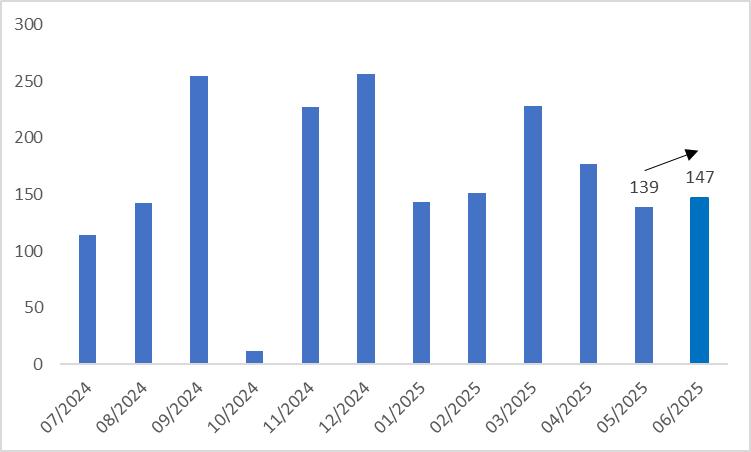
Source: Refinitiv, TradingKey
Figure 2.2: U.S. Unemployment Rate (%)
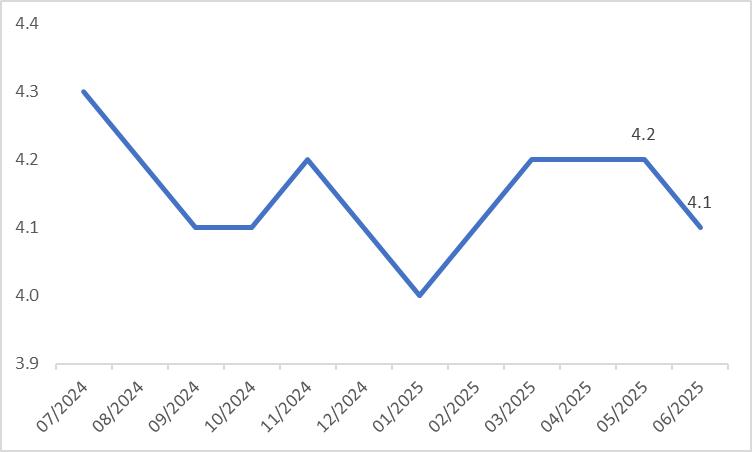
Source: Refinitiv, TradingKey
Figure 2.3: U.S. Government Debt (USD Trillion)
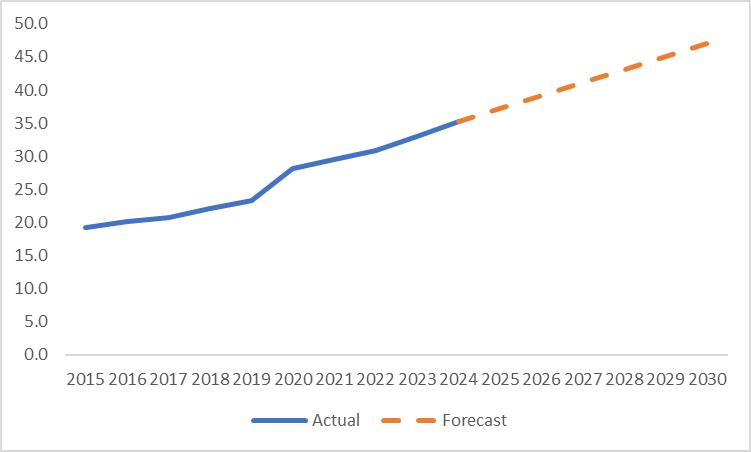
Source: Refinitiv, TradingKey
3. Investment Strategies
This section focuses on two main strategies: asset allocation and sector-specific strategies.
3.1 Asset Allocation Strategy
In terms of asset allocation, the One Big Beautiful Bill Act is expected to provide a short-term boost to the U.S. economy, supporting U.S. equities through improved economic fundamentals. From the perspective of corporate earnings growth, U.S. stock performance forecasts have been declining since the start of the year. However, since late June, earnings expectations have shown signs of bottoming out and rebounding. Under the short-term influence of the Act, we anticipate this rebound will persist. Conversely, for U.S. Treasuries, the Act’s economic stimulus may delay Federal Reserve rate cuts, limiting downward movement in bond yields and constraining price increases. In the long term, the growing national debt is likely to drive yields higher, leading to falling bond prices. Therefore, under the influence of the Act, we are bullish on U.S. equities and bearish on U.S. Treasuries in the short term (Figure 3).
3.2 Sector-Specific Strategy
While we are bullish on U.S. equities, strategically selecting sectors can enhance investor returns. In terms of sector strategy, we are optimistic about the technology and traditional energy sectors, while bearish on the healthcare and renewable energy sectors.
The tax reduction policies, originally set to expire by the end of 2025, have been extended, delivering significant benefits to the U.S. technology sector. Specifically, companies can channel increased post-tax cash flows into enhanced research and development (R&D) efforts, fostering long-term growth. Additionally, these funds can be used for share buybacks, dividends, or other means to reward investors. Furthermore, the repeal of Section 899 and related provisions will alleviate concerns among foreign investors regarding short-term capital outflows. Tax incentives, such as accelerated depreciation and R&D expense deductions, are expected to encourage the reshoring of advanced wafer fabrication, critical IT components, and assembly operations to the U.S., providing a mid-to-short-term boost to industries like semiconductor equipment and foundry services.
The Act supports the traditional energy sector through multiple measures. For the oil and gas industries, it reinstates lease sales, streamlines approval processes, and reduces royalty rates. In the coal sector, it accelerates lease approvals, expands leasable resources, repeals the lease moratorium, and lowers fees. Additionally, the Act retains tax credits for carbon capture and storage technologies, easing regulatory burdens and reducing costs for the coal and oil industries, thereby fostering their growth.
For the bearish sectors, over the next decade, funding for Medicaid and the Children’s Health Insurance Program (CHIP) is projected to be reduced by $1.02 trillion, which is expected to significantly impact the U.S. healthcare sector. Additionally, starting in September, the elimination of the $7,500 electric vehicle (EV) subsidy is likely to further pressure the performance of renewable energy companies, such as Tesla.
In conclusion, with the introduction of the One Big Beautiful Bill Act, investors should adopt prudent asset allocation and rational sector-specific strategies to capitalise on market opportunities.
Figure 3: U.S. Stock and Treasury Markets
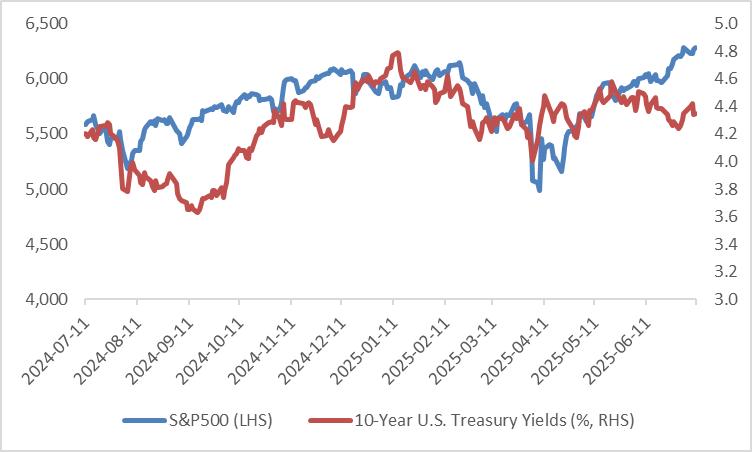
Source: Refinitiv, TradingKey

Get Started



